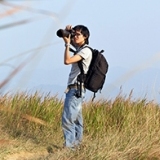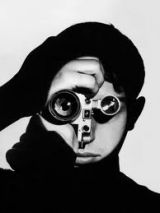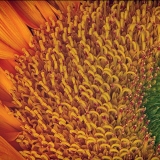- Forum
- General Discussion | Introductions | Off Topic Forum
- Photography General Discussion
- Advantages in shooting B&W with digital?
Advantages in shooting B&W with digital?
-
 Topic Author
Topic Author
- MM Images
- Snapobsessed
-
- Nikon D610
- Followers: 113
- Posts: 265
-
Points:
3104
-

- Stealthy Ninja
- Moderator
-
- Fuji X stuff and a 1DsIII for some reason
- Followers: 982
- Posts: 16300
-
Points:
6837
Post #439622
If you shoot RAW you keep the colour information anyway... so if you were going to shoot black and white so you can see the contrast/resolution, then shoot RAW so you have the option of colour later on.
-

- Robert Chen
- Photography Hooked
-
- Nikon D300
- Followers: 194
- Posts: 794
-
Points:
5860
Post #439630
Stealthy Ninja wrote: With my Sony I shoot black and white when doing manual focus. It helps with focusing.
If you shoot RAW you keep the colour information anyway... so if you were going to shoot black and white so you can see the contrast/resolution, then shoot RAW so you have the option of colour later on.
How does that make a difference when focusing?
Nikon D300 24-70mm f2.8
70-200mm f2.8
50mm f1.4 & 50mm f1.8
105mm f2.8
2 SB800
-

- garyrhook
- Oh Wise One
-
- Nikon D850, Nikon D750, Panasonic G7K
- Followers: 912
- Posts: 11103
-
Points:
67681
Post #439632
Aside from focusing, if the display presents a grayscale image, which I believe is about being able to detect contrast more easily in B&W instead of color. I can see that being a good thing.
Aside from that, I think it's a somewhat apples and oranges comparison. B&W film doesn't work the same way as a digital sensor, and your conversion in post still brings you to the point where you can manipulate exposure and contrast to your heart's content. Digital provides so much more control and possibility in post that film can't touch. I think. Others may disagree, in which case I await education.
-

- Stealthy Ninja
- Moderator
-
- Fuji X stuff and a 1DsIII for some reason
- Followers: 982
- Posts: 16300
-
Points:
6837
Post #439649
Robert Chen wrote:
Stealthy Ninja wrote: With my Sony I shoot black and white when doing manual focus. It helps with focusing.
If you shoot RAW you keep the colour information anyway... so if you were going to shoot black and white so you can see the contrast/resolution, then shoot RAW so you have the option of colour later on.
How does that make a difference when focusing?
A7 has an electronic viewfinder. You see everything in black and white. Because it's black and white you can pick up if it's sharp easier (more contrast). The old TV cameras had black and white viewfinders for this purpose (maybe they still do, I haven't used one for a long time).
-
 Topic Author
Topic Author
- MM Images
- Snapobsessed
-
- Nikon D610
- Followers: 113
- Posts: 265
-
Points:
3104
-

- tganiats
- Lone Wolf
-
- Nikon D800
- Followers: 99
- Posts: 218
-
Points:
130
Post #439676
I use to agree with garyrhook,
and I still do, because most of our cameras do. I agree, shoot color and convert to B&W later...You get a lot more control, including being able to use many different color filters later (your father couldn't change filters once the image was captured)There are no advantages to shooting in B&W with digital, if the camera captures color images. Kinda illogical.
But what I didn't realize is that the dedicated B&W digital cameras offer an advantage over the "normal" digital cameras. Color cameras need a grid of 3 pixels (one for green, one for red, one for blue) that is later combined for the color. If you have a dedicated B&W camera, then you, in essence, triple your pixels. With some advantages.
Worth a read, if you can find it.
Post #439763
It is the same with digital in that you need to see in your minds eye what you are shooting will look like in B&W. But any properly exposed image will show good contrast, and range. If your shot is too far out, then converting to B&W will not make it any better, in fact it will look worse. Having a B&W mindset will make you more picky about what you are shooting as well. At least that is how it is for me.
-

- Glen Martin
- Snapobsessed
-
- Canon 5D Mark II
- Followers: 149
- Posts: 447
-
Points:
3203
Post #439780
I like the look better of what I've done in the darkroom, the paper and gloss, etc. I haven't done nearly as much digitally but I did have one photo I shot in color digitally and did a B&W version of it and got it accepted into an exhibit. Maybe shooting in B&W gets you thinking more about the tones and contrast in a scene or subject since B&W is basically the absence of color.
Sharon
-

- TGonzo
- Photography Hooked
- Followers: 127
- Posts: 505
-
Points:
4659
-

- Shadowfixer1
- Photo Elder
-
- Olympus OMD E-M1 MKII
- Followers: 1350
- Posts: 5553
-
Points:
73304
Post #439928
-
 Topic Author
Topic Author
- MM Images
- Snapobsessed
-
- Nikon D610
- Followers: 113
- Posts: 265
-
Points:
3104
- Forum
- General Discussion | Introductions | Off Topic Forum
- Photography General Discussion
- Advantages in shooting B&W with digital?
Latest Reviews
The Canon EOS R100 is an entry-level mirrorless camera introduced in 2023. But just because it’s an entry-level camera doesn’t mean it’s a bare-bones camera. Find out why in this review!
Nikon’s retro-looking Nikon Zfc is anything but retro. Under its classic body is a host of features and amenities that make it a worthwhile compact mirrorless camera for 2024.
The Canon EOS R50 is one of the newest R-system cameras from Canon. Is it worth your money? Find out all the details you need to know in this comprehensive review.
The Sony FE 70-200mm f/2.8 GM OSS II is Sony’s flagship mirrorless zoom lens. As such, it’s loaded with features and has a top-shelf build quality that makes it a top pick!
Forum Top Posters
-
1TCav 6 posts
-
2Randy Shaw 4 posts
-
3Prago 4 posts
-
4Foggy 4 posts
-
5Razky 4 posts
-
6CharleyL 3 posts
-
7db3348 3 posts
-
8CaptNemo 3 posts
-
9Sandy Smith Photos 3 posts
-
10Steve Zahra 2 posts
Latest Articles
Creating impactful photos of landscapes depends on many factors, not the least of which is your talent behind the lens. This guide explores other elements required for the best product.
The Canon EOS R100 is an entry-level mirrorless camera introduced in 2023. But just because it’s an entry-level camera doesn’t mean it’s a bare-bones camera. Find out why in this review!
Are you ready to upgrade your camera? Before buying new, you might consider the value of purchasing used gear to save money.
The Olympus OM-D E-M10 Mark IV is a micro four thirds camera released in 2020. It’s an entry-level system along with the OM-D E-M5 Mark III. Use this guide to determine which one is best for you!
Blue hour photography might not be as well known as golden hour photography, but it is every bit as good a time to create epic images of landscapes. Learn how in this quick tutorial!
Nikon’s retro-looking Nikon Zfc is anything but retro. Under its classic body is a host of features and amenities that make it a worthwhile compact mirrorless camera for 2024.
Moving from taking snapshots of your dog to creating beautiful images doesn’t have to be that difficult! Use the tips outlined in this dog photography guide, and you’ll get better results in no time.
Acrylic print photos are a beautiful way to display your favorite images. But they don’t come without some questions. Get all the answers you need about this medium in this guide!


















